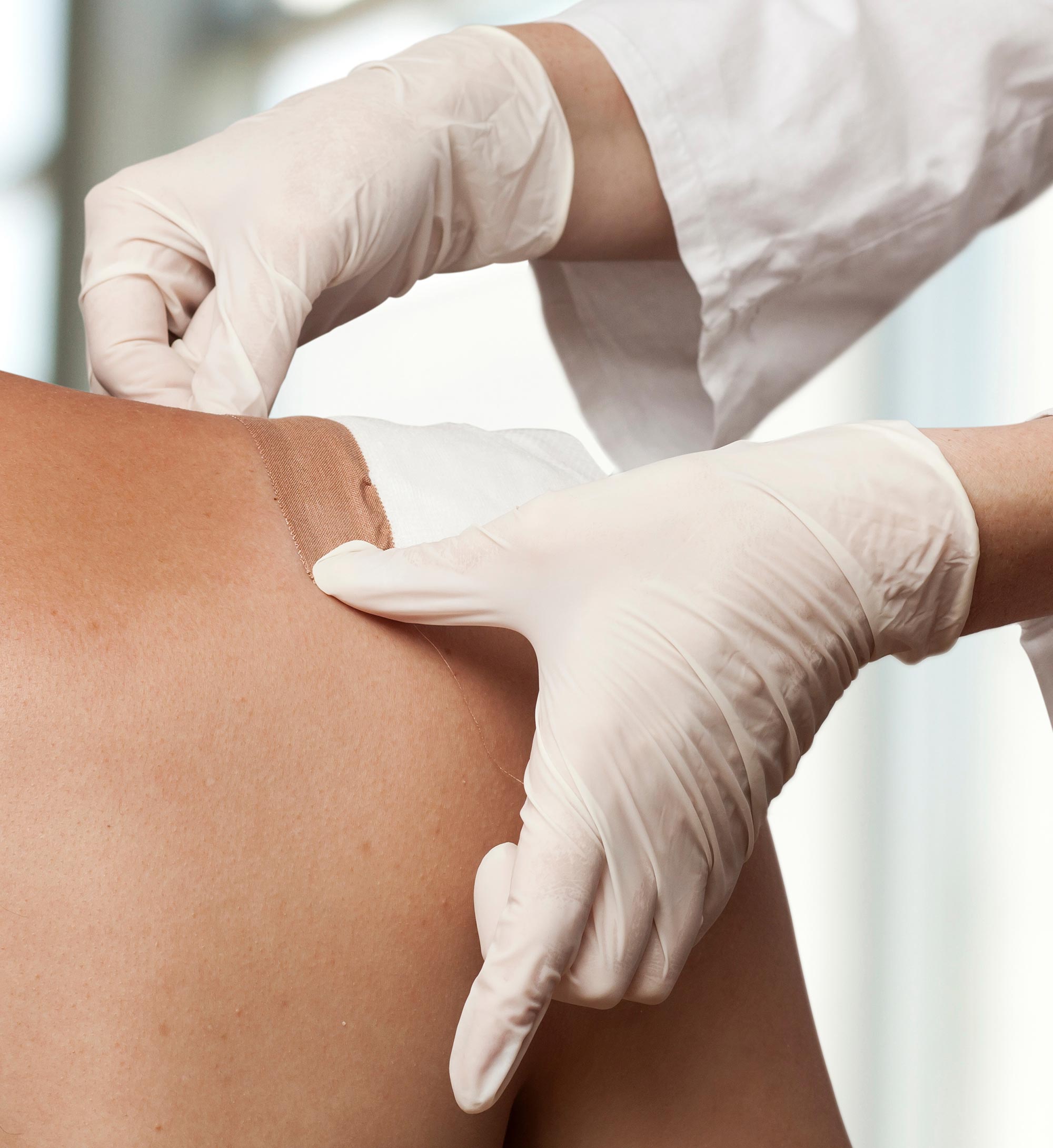Treatment
Wound Healing Process

Acute + Chronic Wound Healing Process
Acute wounds typically follow a normal healing process, but post-acute or chronic wounds (A wound that has failed to heal in 4 weeks is defined as a chronic wound) may take several weeks or even years to heal. Acute wounds can often be treated with standard protocols; most chronic wounds require expert care that can only be provided by competent and licensed professionals.
4 Stages of Wound Healing
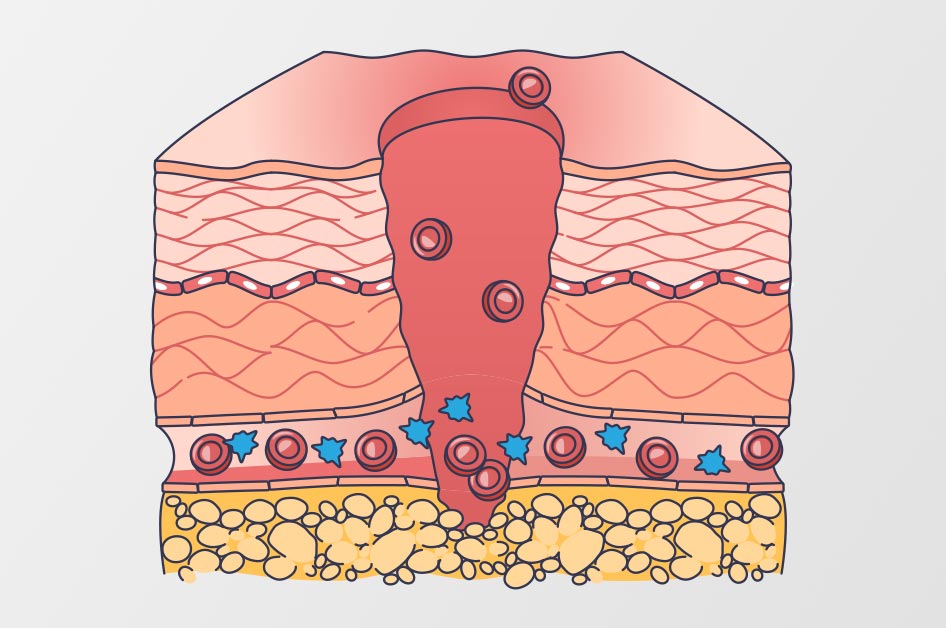
Phase 1
Hemostasis (Blood Clotting)
This is the initial stage where bleeding is stopped through the restriction of blood vessels, known as vasoconstriction. Concurrently, clotting factors are released at the wound site to coagulate with fibrin, resulting in a thrombus, commonly known as a blood clot. The clot acts as a sealant to prevent the loss of blood from the broken blood vessels. Platelets play a crucial role in this phase.
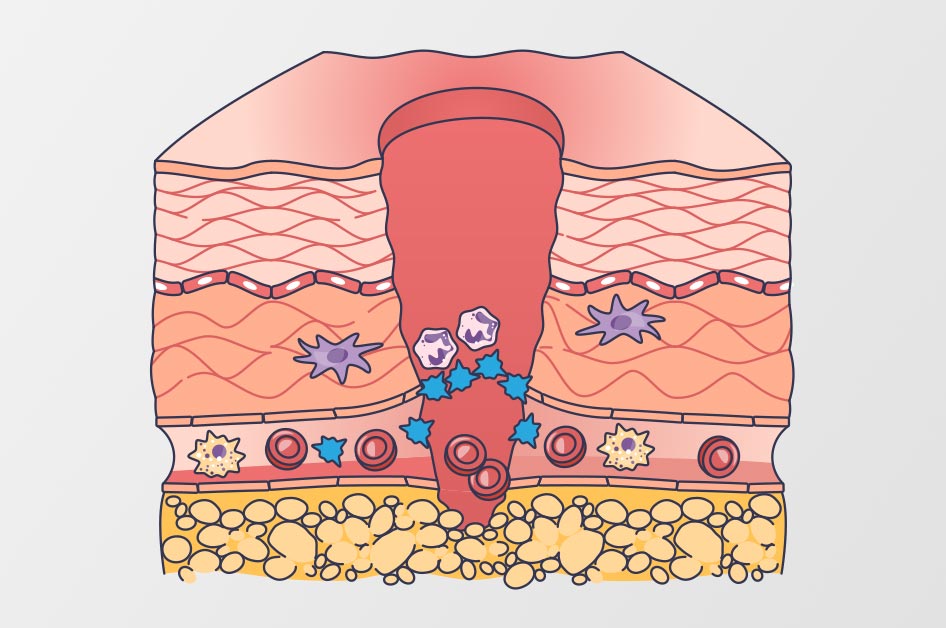
Phase 2
Inflammatory Phase
Inflammation begins to clear away debris and pathogens from the wound site. White blood cells, such as neutrophils and macrophages, are involved in this stage. White blood cells, along with enzymes, enter the wound in an attempt to avoid infection. Inflammation is a natural and necessary part of the healing process and often includes redness, edema, heat, and pain.
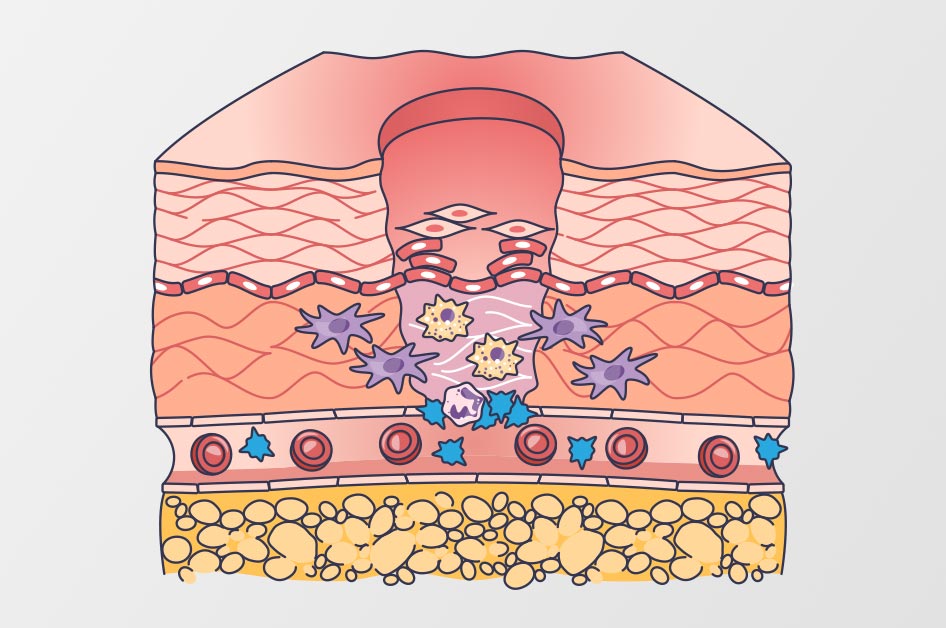
Phase 3
Proliferative Phase
New tissue is formed to replace the damaged tissue. Fibroblasts produce collagen, which is a key component of the extracellular matrix. Blood vessels also start to grow to supply nutrients to the healing tissue. The time it takes for tissue regeneration depends upon the production of collagen proteins by fibroblasts, which is a type of cell found in connective tissue.
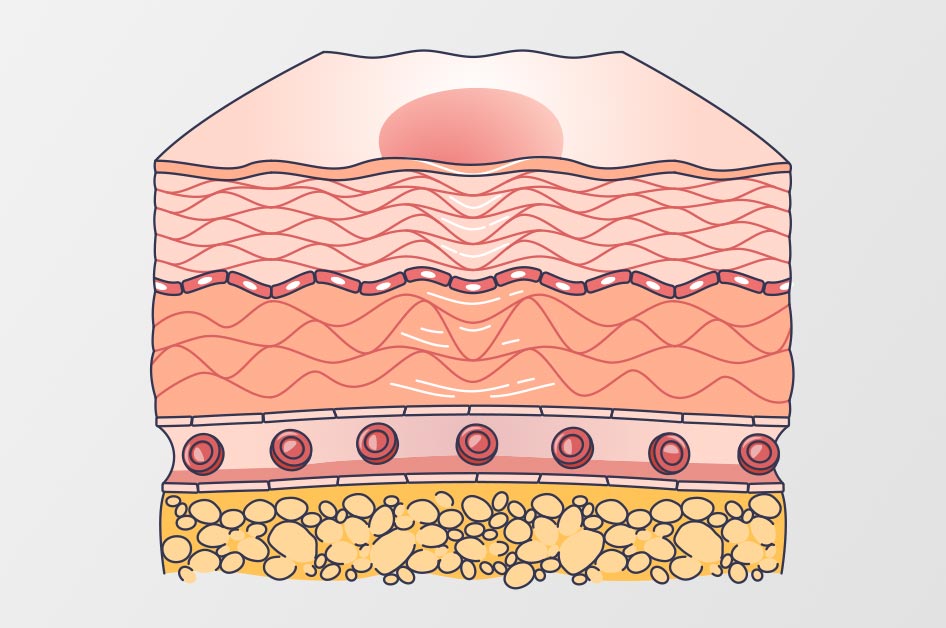
Phase 4
Maturation (Remodeling) Phase
The final stage involves the remodeling of the newly formed tissue. Collagen is realigned and strengthened, and the tissue gradually gains strength. The build-up of collagen in the granulation tissue leads to scar tissue formation, which is generally weaker and less elastic than pre-injured skin. This phase can last for an extended period.
Complex and Dynamic Process
These stages are interconnected and may overlap, and the duration of each stage can vary depending on factors such as the type and extent of the wound, as well as individual health conditions. It’s important to note that wound healing is a complex and dynamic process that involves the coordination of various cells and factors to restore tissue integrity.
When the progression of any of the four stages encounters an interruption, most commonly in Stage 2 – Inflammatory Phase, the result is a persistent or Chronic, non-healing wound.
